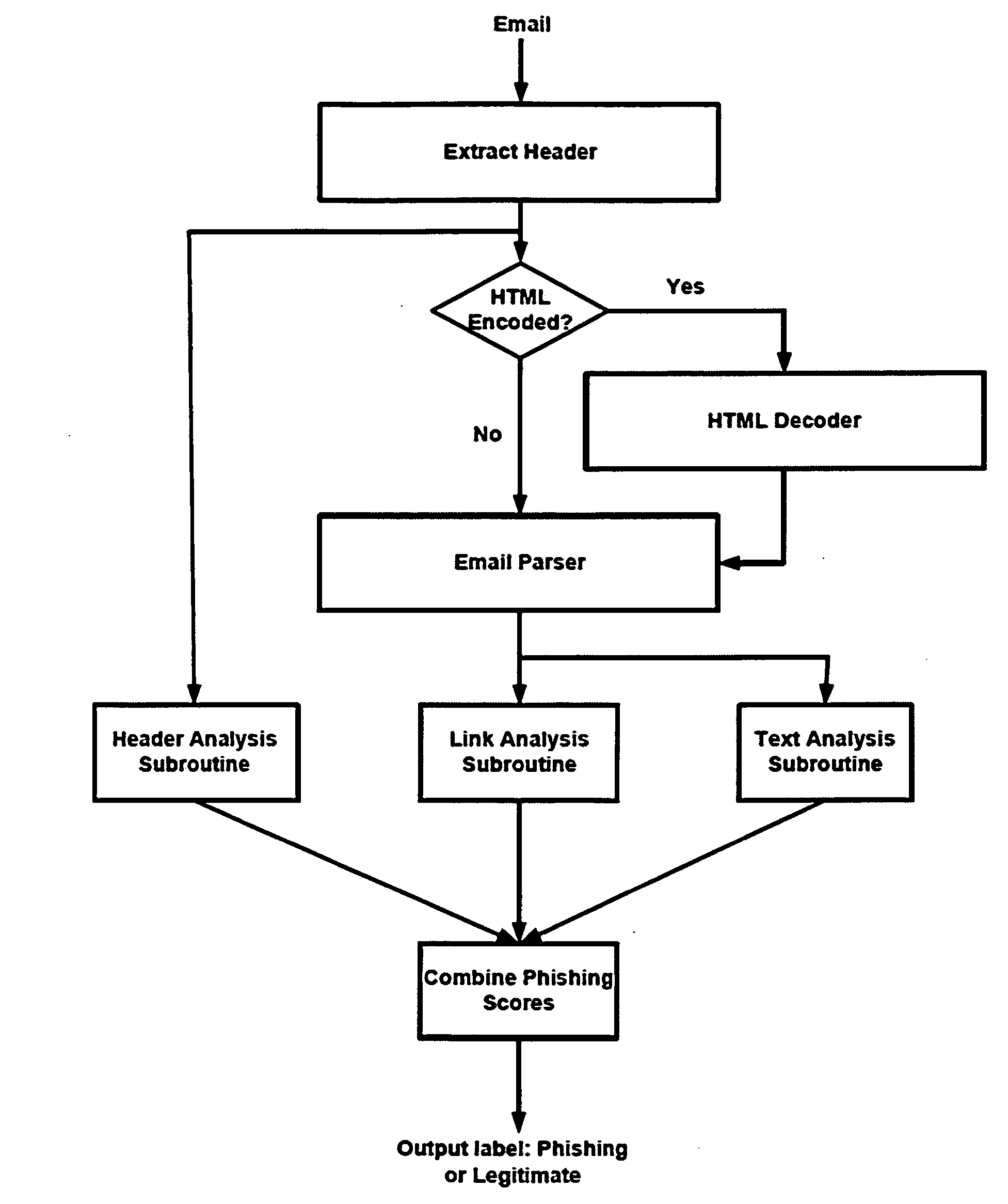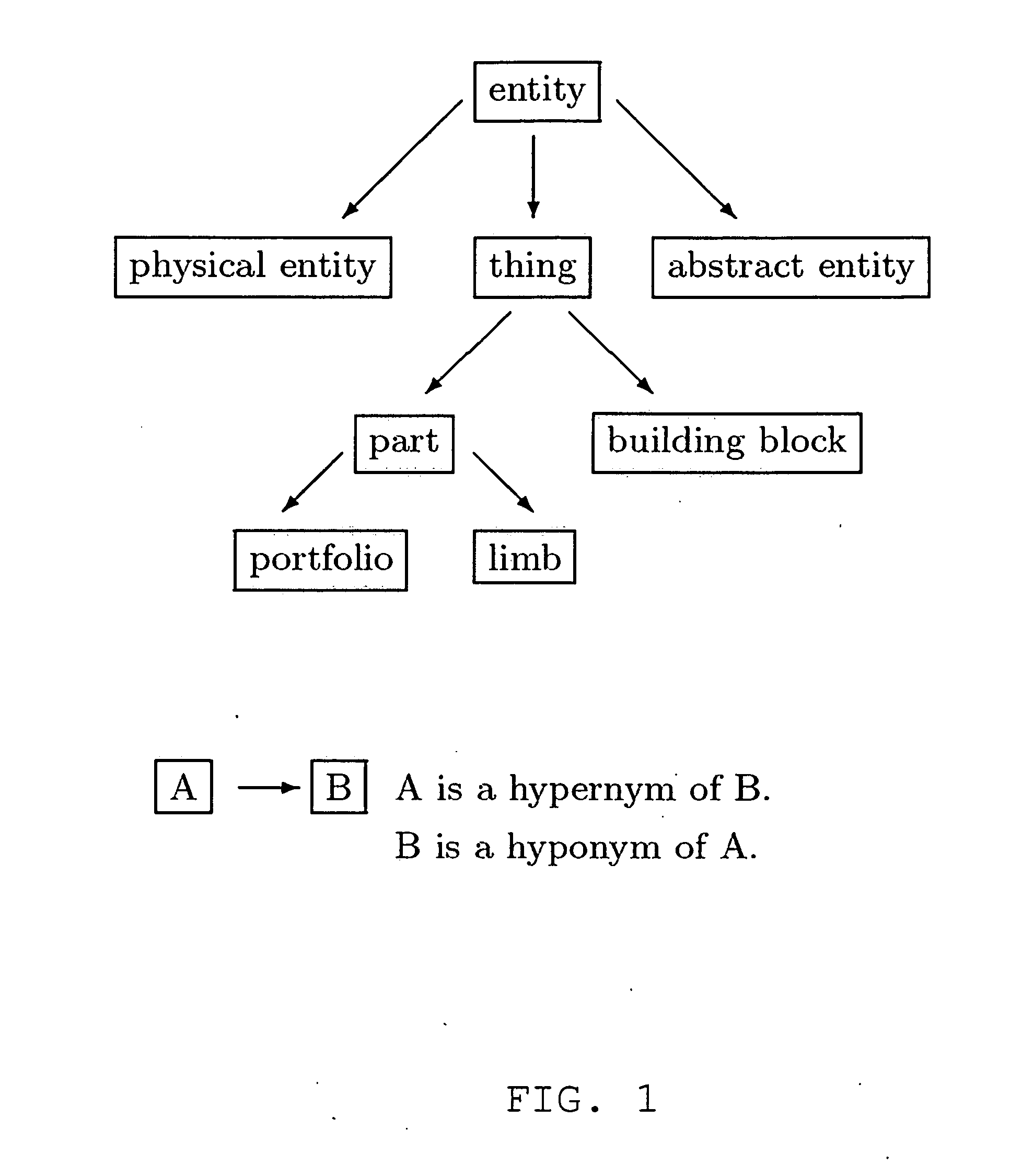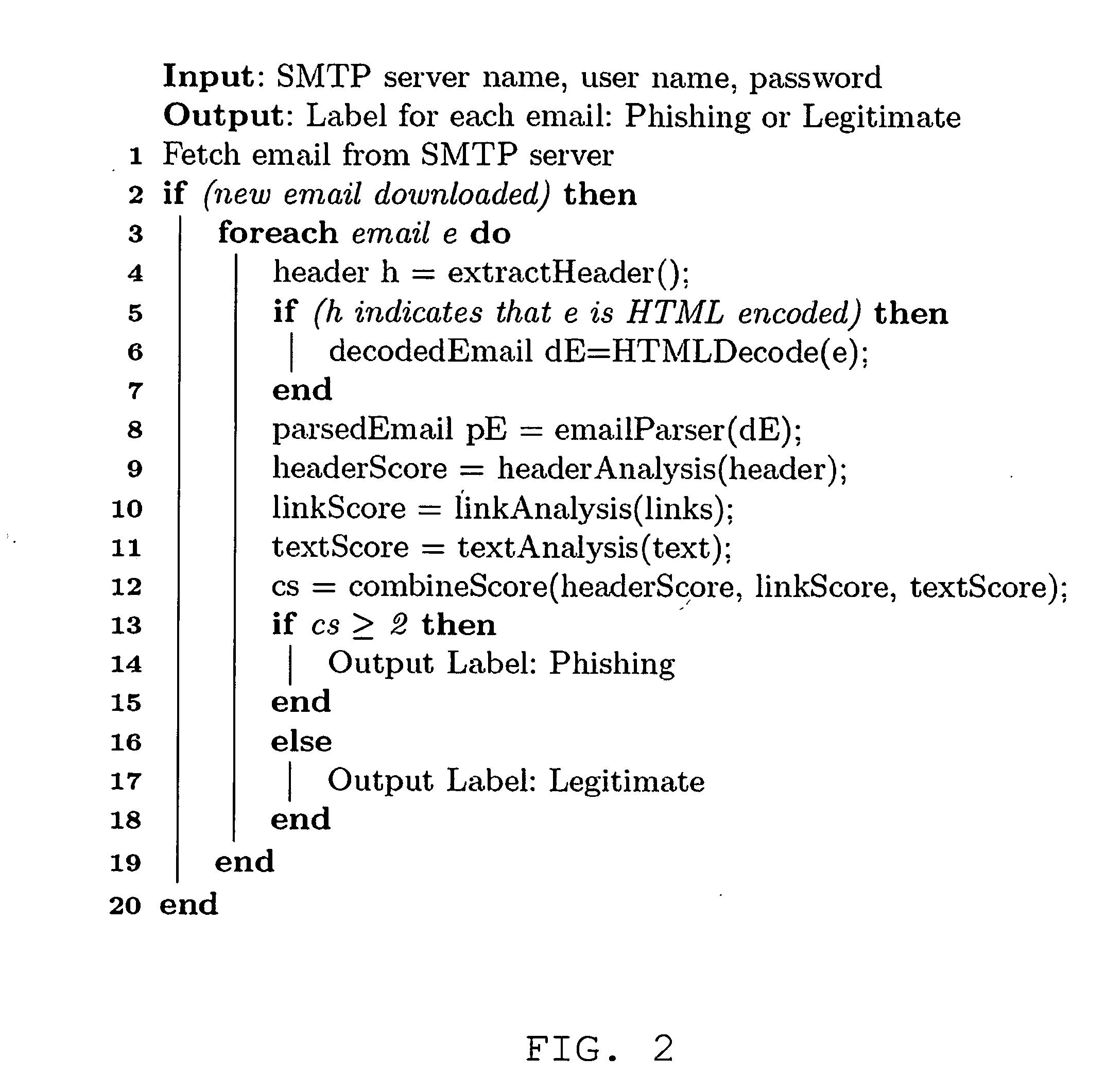Automatic phishing email detection based on natural language processing techniques
a technology of automatic phishing email detection and natural language processing, applied in the field of phishing, can solve the problems that none of the detection schemes in the literature available appear to make use of this distinction to detect phishing emails, and the natural language processing of computers is well recognized to be a very challenging task, so as to improve the performance of the phishing classifier, minimize the detection time, and save bandwidth
- Summary
- Abstract
- Description
- Claims
- Application Information
AI Technical Summary
Benefits of technology
Problems solved by technology
Method used
Image
Examples
example 1
[0134]Consider a phishing email in which the bad link, deeming the email phishing, appears in the top right-hand corner of the email and the email (among other things) directs the reader to “click the link above.” The score of verb vεSV being score (v)={1+x(l+a)} / 2L. The parameter x=1, if the sentence containing v also contains either a word from SA∪D and either a link or the word “url,”“link,” or “links” appears in the same sentence, otherwise, x=0. The parameter l=2, if the email has two or more links, l=1 if the email has one link, and l=0 if there are no links in the email. The parameter a=1 if there is a word from U or a mention of money in the sentence containing v, otherwise a=0. Money is included for illustrative purposes since phishers often lure targets by promising them a sum of money if they complete a survey or by stating that someone tried to withdraw a sum of money from the user's bank account recently, etc. The parameter L is the level of the verb, where level of a v...
PUM
 Login to View More
Login to View More Abstract
Description
Claims
Application Information
 Login to View More
Login to View More - R&D
- Intellectual Property
- Life Sciences
- Materials
- Tech Scout
- Unparalleled Data Quality
- Higher Quality Content
- 60% Fewer Hallucinations
Browse by: Latest US Patents, China's latest patents, Technical Efficacy Thesaurus, Application Domain, Technology Topic, Popular Technical Reports.
© 2025 PatSnap. All rights reserved.Legal|Privacy policy|Modern Slavery Act Transparency Statement|Sitemap|About US| Contact US: help@patsnap.com



